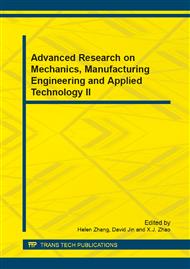p.64
p.68
p.72
p.79
p.83
p.88
p.92
p.96
p.106
Research on the Transmission Characteristics and Mechanical Mechanics of Dual Meshing Points in Involute-Circular Arc Tooth Gear
Abstract:
The principle of gear engagement and the relevant knowledge of gear geometry were used to introduce the dual meshing points involute-circular arc tooth gear in detail. At the same time, use the derived equation of the contact line and the tooth profile equation to describe the gear meshing process. Derive to this gear formula of coincidence degree calculate, in order to improve the transmission theory of the gear. Combine the gear contact line equation, equation of the tooth profile and transmission analysis, studies the meshing performance and serve as a theoretical basis for the gear design and application.
Info:
Periodical:
Pages:
83-87
Citation:
Online since:
April 2014
Authors:
Keywords:
Price:
Сopyright:
© 2014 Trans Tech Publications Ltd. All Rights Reserved
Share:
Citation:


